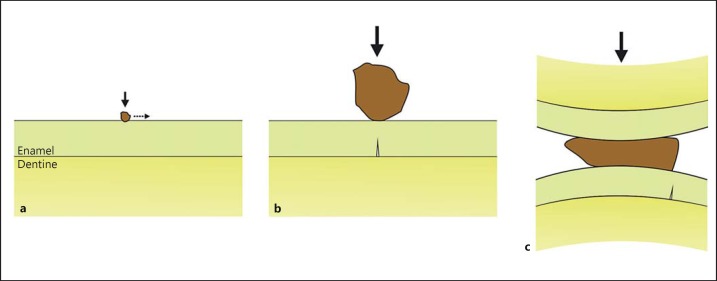Fig. 5.
The damage that enamel sustains due to contacts with hard objects (direction and size of force given by the arrows) depends on scale. a A small particle that is much harder than enamel tends to indent its surface, producing microfracture (‘wear‘) if the particle slides. b A large hard particle is more likely to produce a crack on the undersurface of the enamel directly under the contact (a ‘radial' macrofracture) due to enamel flexure. c A softer large particle deforms between teeth. It can still damage the enamel via bending forces, but only away from the contact area, thus forming a ‘margin' macrofracture.

